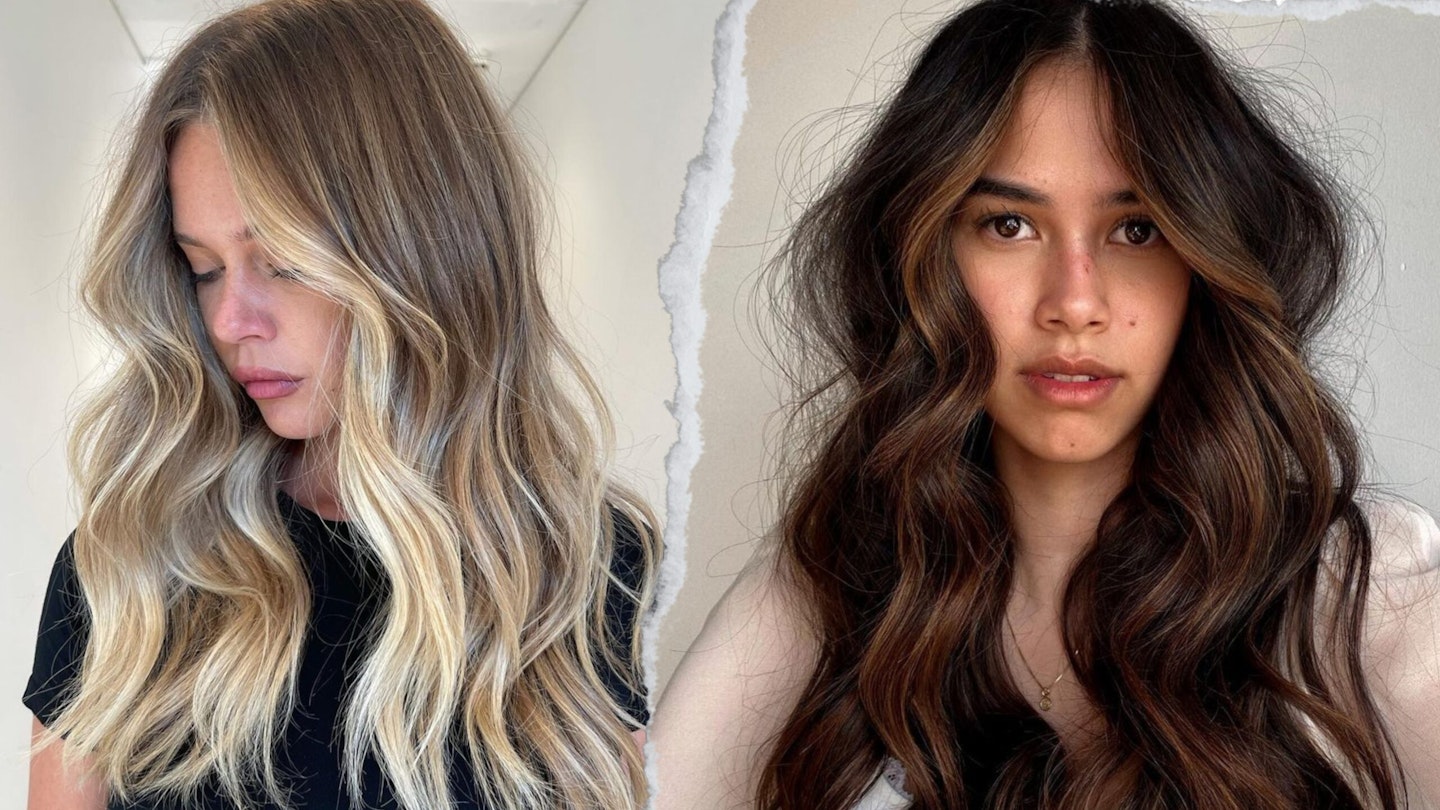Most hair trends come and go but one that's stuck over the years is Balayage. Meaning "sweep" in French, "it's a free-hand painting technique where stylists hand-paint certain sections of the hair in a sweeping motion," explains expert hairstylist, Limoz Logli. It's been around for a while, but remains popular to this day, thanks to the effortless, natural effect it creates. What's more, it's perfect if you're after something that's low maintenance. Here's why.
What is balayage and how is it achieved?
"The balayage technique typically lightens the ends of the hair, where the top of the hair is kept natural or dyed a darker colour to give a grown-out or lived-in look," says Polly Rhodes, Balayage Specialist at Cally Borg Hair. Whilst the treatment is typically more expensive than highlights, it's a lot more low maintenance. So less visits to the salon.
"The look is achieved in a variety of ways," Polly adds. "For example, using a free hand technique, where you would hand paint the areas you wish to lighten, then use toners to create the blend and tone. You can also backcomb and foil where you would choose your placement, backcombing the root and painting the hair onto a foil to give it the maximum lift – or alternatively, you can use a balayage board, putting the section of hair onto a board and painting directly onto it. You can get very similar results with all techniques, it just depends on the stylist's preference."
How is balayage different from highlights and ombre?
Balayage, highlights and ombré all work to lighten the hair in some way or another, but each technique creates a different result, and some require a lot more upkeep. Wondering how they differ? Here's what the experts say.
-
"Ombré focuses on creating hair that is strikingly lighter than your base colour, where your roots look distinctively different than your ends," shares Katie Freedman, Colourist at Larry King's Notting Hill salon. It's often mistaken for balayage but it's not as blended, featuring a dramatic two-toned effect. Great if you're looking to make a statement!
-
"Highlights involve placing small sections of hair into foil, which are then painted from root to tip," says Polly. "To ensure the natural colour from the regrowth is topped up, highlights need to be refreshed every 6-7 weeks," adds Katie. "Balayage, however, only needs to be freshened up a few times a year."
-
"Balayage doesn't start from the roots and it doesn't follow a strict sectioning pattern," says Limoz. "It blends seamlessly with your own natural hair colour, resulting in a gentle, soft-sweeping lightening of the hair – It's more natural, with a sun-kissed appearance."
Does it work for every hair type?
"Whether you're a blonde, gingeror brunette, balayage is a super versatile look that can be achieved on both shorter and longer hair," explains Katie. "It's subtle, so it tends to suit those who want a natural look or don't want to stray from their base colour." However, if you have more than 50 per cent grey hair and want something that's going to be low maintenance, Polly recommends opting for other colouring techniques to blend the colour out, as "the darker shade on top would immediately show the grey regrowth after two weeks."
Does balayage damage hair?
Just as with other chemical processing treatments, balayage can damage your hair, but nowhere near as much as traditional highlights. "If you're thinking of trying out a balayage, your stylist will consider the strength of your hair first," Polly says. "Balayage lightens the ends of your hair – the weakest area – therefore this needs to be taken into consideration before going ahead with the treatment."
"During your appointment, as well as carrying out a strand test, your stylist will often suggest a treatment such as Olaplex, K18 or Innoluxe to protect the hair throughout treatment," she adds. "This will create a barrier to protect the hair during the chemical process." And don't forget about aftercare. By investing in a shampoo and conditioner that enhances your colour, as well as a nourishing hair mask to treat split ends, you'll get the most out of your balayage.
How long does balayage last?
"It all depends on the application, how heavy it has been applied, and how much build up colour you have," Limoz says. "The more natural the colour, the longer it will last." That being said, the blended finish means you should be able to leave longer between salon appointments. If you're not dealing with greys and you take care of your colour, your balayage can last up to 12 months, but if you prefer it to look fresher, Polly recommends booking in every 2-6 months. "I'd also suggest a quick toner after 6-8 weeks to refresh the colour and prevent unwanted brassiness".
Whether you're sick of keeping up with highlights, crave a more natural look or you're looking to save money this year, balayage is the perfect lazy-girl technique to see you through the seasons. Need some inspo? Keep scrolling.
